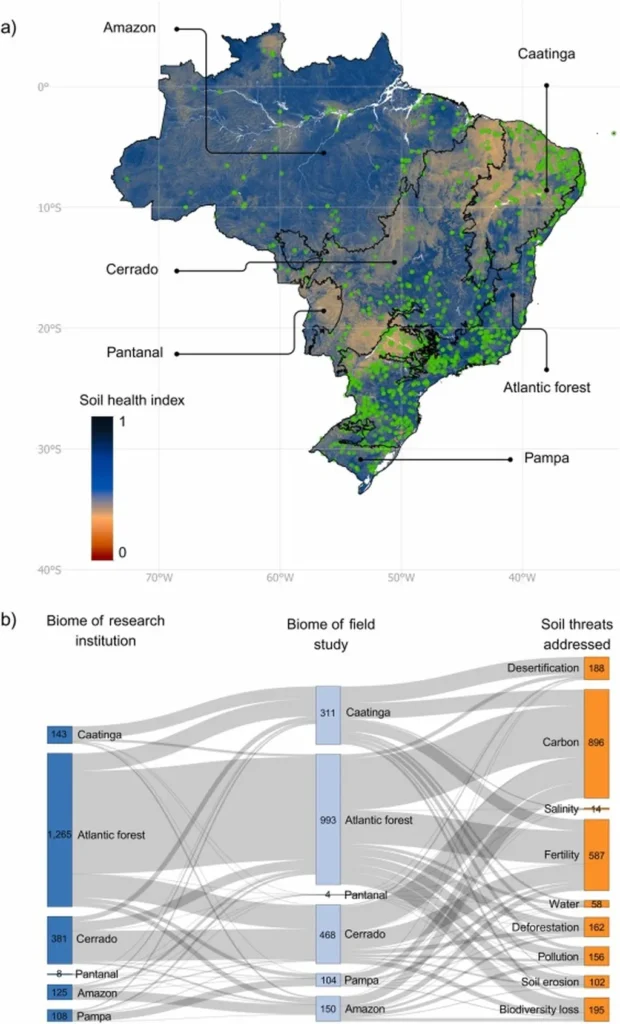In the vast agricultural landscapes of Brazil, a groundbreaking study has unveiled the hidden hotspots of microbial enzyme activities, offering a new lens to view soil health and its implications for sustainable farming. Published in *Soil Advances*, the research led by Heidy Soledad Rodríguez-Albarracín from the Department of Soil Science at the Luiz de Queiroz College of Agriculture (ESALQ), University of São Paulo, employs a sophisticated blend of proximal and remote sensing technologies, coupled with machine learning, to map soil enzyme activities across an impressive 3.4 million km² of farmland.
The study focuses on three critical enzymes—beta-glucosidase, acid phosphatase, and urease—which play pivotal roles in the carbon, phosphorus, and nitrogen cycles. These cycles are not just academic interests; they are the lifeblood of agricultural productivity and environmental sustainability. By leveraging spectral data from the Vis-NIR-SWIR and Mid-IR ranges, the researchers identified specific spectral bands that correlate with these enzyme activities. This breakthrough allows for the creation of national-scale maps at an unprecedented 30-meter spatial resolution, offering farmers and policymakers a detailed, data-driven tool to assess and manage soil health.
“Understanding the spatial distribution of these enzymes is like unlocking a treasure map for sustainable agriculture,” Rodríguez-Albarracín explained. “It allows us to see where the soil is thriving and where it needs intervention, ultimately guiding more precise and effective farming practices.”
The implications for the agriculture sector are profound. For instance, the study found that land use significantly influences enzyme activities. Areas under forest, soybean, and sugarcane showed higher enzyme activity levels, indicating healthier soils. Conversely, urease activity decreased in areas treated with nitrogen fertilizers, a finding that could reshape fertilizer application strategies to optimize soil health and crop yields.
The research also highlighted strong correlations between enzyme activities and soil mineralogy, particularly the distributions of hematite and kaolinite. This connection underscores the importance of understanding soil composition in managing enzyme activities and, by extension, soil fertility.
The commercial impacts of this research are vast. Farmers can now access detailed maps to make informed decisions about crop rotation, fertilizer use, and soil management practices. This precision agriculture approach not only boosts productivity but also promotes environmental sustainability by reducing the need for excessive chemical inputs.
Looking ahead, the study paves the way for satellite-based enzyme monitoring, a tool that could revolutionize national-scale soil health monitoring and management. “This is just the beginning,” Rodríguez-Albarracín noted. “As we refine our techniques and expand our datasets, we can provide even more granular insights into soil health, helping farmers adapt to climate change and ensure food security for future generations.”
In essence, this research is not just about mapping enzymes; it’s about empowering farmers with the knowledge to cultivate healthier soils and more resilient crops. As the agriculture sector grapples with the challenges of climate change and increasing food demand, such innovations are not just welcome—they are vital.

